 W
WThe Alhóndiga de Granaditas is an old grain storage building in Guanajuato City, Mexico. This historic building was created to replace an old grain exchange near the city's river. The name Alhóndiga translates roughly from both Arabic and Spanish as grain market or warehouse. It is equivalent to the regional grain exchange. Its construction lasted from 1798 to 1809, by orders of Juan Antonio de Riaño y Bárcena, a Spaniard who was the quartermaster of the city during the Viceroyalty of New Spain. Miguel Hidalgo y Costilla helped build it. The building received World Heritage listing as part of the Historic Town of Guanajuato in 1988.
 W
WThe Museo Diego Rivera Anahuacalli or simply Anahuacalli Museum is a museum located in Coyoacán, in the south of Mexico City.
 W
WThe Archivo General de la Nación is charged by the Mexican state to "be the governing body of the national archives and the central consultative entity of the Federal Executive." The writer Edmundo O'Gorman was its general director from 1938 until 1952. It is considered the most important among its class in the Americas and one of the most important in the entire world.
 W
WThe Museo de Arte Popular is a museum in Mexico City, Mexico that promotes and preserves part of the Mexican handcrafts and folk art. Located in the historic center of Mexico City in an old fire house, the museum has a collection which includes textiles, pottery, glass, piñatas, alebrijes, furniture and much more. However, the museum is best known as the sponsor of the yearly, Noche de Alebrijes parade in which the fantastical creatures are constructed on a monumental scale and then paraded from the main plaza or Zocalo to the Angel of Independence monument, competing for prizes.
 W
WMuseo Universitario de Artes Populares María Teresa Pomar is a museum dedicated to Mexico's handcrafts and folk art tradition, called “artesanía.” It is part of the University of Colima in the city of Colima, founded by artesanía collector and promoter María Terea Pomar. It contains one of the most important collections of its type in Mexico, covering traditions from around the country as well as the artesanía and traditions of the state of Colima.
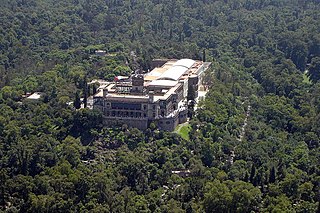 W
WThe Museo del Caracol is a Mexican history museum, at the bottom of the access ramp to the Castillo de Chapultepec in Mexico City. The “Snail Museum” is a spiral shaped building designed by the architect Pedro Ramirez Vazquez. The director is Patricia Torres Aguilar Ugarte. It is opens from Tuesday to Thursday from 9:00 to 16:45.
 W
WCasa Chihuahua Centro de Patrimonio Cultural, once known as the Federal Palace of Chihuahua, is an early 20th-century building in the city centre of Chihuahua, Chih., Mexico. It served as the federal building for the city until 2004, when it was renovated as a city museum, specialising in travelling exhibits. It also houses, in the basement, the jail cell of father Miguel Hidalgo y Costilla, considered the Father of the Nation. Father Hidalgo was the first leader of the insurgency for independence from Spain. He was captured by the Spaniards early in 1811, tried and executed on 30 July 1811 at the neighbouring Government Palace. His jail cell is a national shrine.
 W
WThe Museo de la Lealtad Republicana, also known as the Museo Casa Juárez, is a 19th-century building in the city centre of Chihuahua, Mexico. It housed the constitutional government of President Benito Juárez during his stay in Chihuahua while Maximilian of Habsburg reigned as Emperor of Mexico, supported by the French, and was thus the de facto National Palace of Mexico.
 W
WThe Church and former monastery of Santo Domingo de Guzmán is a Baroque ecclesiastical building complex in Oaxaca, Oaxaca, Mexico. The complex includes a substantial sanctuary and an extensive system of courtyards, cloisters and rooms that formerly constituted the monastery.
 W
WThe San Pedro y San Pablo College colonial church and school complex built in late 16th and early 17th centuries, located in the historical center of Mexico City district of Mexico City, Mexico.
 W
WThe Museo Nacional de las Culturas is a national museum in Mexico City dedicated to education about the world's cultures, both past and present. It is housed in a colonial-era building that used to be the mint for making coins. Prior to this, the site was the home of the location of the Moctezuma's Black House. The mint was moved to Apartado Street in 1850, and the building was used for various purposes until it was converted to its current use in 1966.
 W
WThe Ex-monastery of Santiago Apóstol is located in the town of Cuilapan de Guerrero in the Mexican state of Oaxaca. The fortress-like complex is easily seen from the highway as one travels south from the capital city of Oaxaca on the road leading to Villa de Zaachila, and it is visited by both Mexican and international tourists. The complex is located on a small hill which gives it a view of much of the valley area. It is one of the most extravagant and elaborate colonial era constructions in Oaxaca, but it is often overlooked in favor of churches and monasteries located in the Mexico City area. Built of green quarried stone and river rocks, it is a quiet place where footsteps can echo in the hallways. The extravagances of the site, including the tall basilica, the elaborate baptismal font, the Gothic cloister and murals remain as national treasures. The decorative work of the monastery, especially its murals, are important because they show a systematic blending of indigenous elements into the Christian framework, done in order to support the evangelization process in the local Mixtec and Zapotec peoples. The single-naved church is used for worship but the roofless basilica and cloister are under the control of INAH, which uses many of the second-floor rooms of the cloister as workshops for restoration projects and runs a small museum with important liturgical items from the 16th century.
 W
WThe Museo de Arqueología Ganot-Peschard is an archaeology museum located in Zona Centro, Durango, Mexico. The museum plays a major role in preserving the indigenous history of Northern Mexico. The Ganot-Peschard's collection offers archeological materials from the region's landscapes and dwellings including, funeral urns, skulls, vessels, arrowheads, winches, pectorals and other ornamental materials of pre-Hispanic peoples. Its objective is to preserve and spread the archaeological heritage of Durango and the region formed by the states of Zacatecas, Sinaloa, Nayarit and Jalisco.
 W
WThe Instituto Nacional de Antropología e Historia is a Mexican federal government bureau established in 1939 to guarantee the research, preservation, protection, and promotion of the prehistoric, archaeological, anthropological, historical, and paleontological heritage of Mexico. Its creation has played a key role in preserving the Mexican cultural heritage. Its current national headquarters are housed in the Palace of the Marqués del Apartado.
 W
WLa Estacion Theme Park, including The Old Train Station and Railway Museum, is a historic and recreational complex located in the city of Aguascalientes, in the state of Aguascalientes, in Mexico.
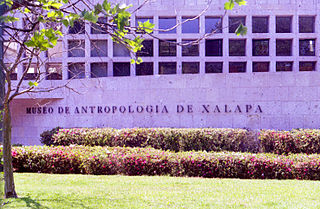 W
WThe Museo de Antropología de Xalapa is an anthropological museum in the city of Xalapa, capital of the state of Veracruz in eastern Mexico. The building was designed by the architect Paul Balev at EDSA, 4 E 70th St, New York, N.Y. and opened in 1986.
 W
WThe Museo Nacional del Virreinato is located in the former College of San Francisco Javier complex in Tepotzotlán, Mexico State, Mexico.
 W
WThe National Museum of History, also known as MNH, is a national museum of Mexico, located inside Chapultepec Castle in Mexico City. The Castle itself is found within the first section of the well known Chapultepec Park. The museum received 2,135,465 visitors in 2017.
 W
WThe Museo Nacional de las Intervenciones is located in the former Monastery of San Diego Churubusco, which was built on top of an Aztec shrine. The museum is split into two sections. The downstairs is dedicated to the site’s history as a monastery, and the upstairs rooms are dedicated to artifacts related to the various military conflicts that have taken place on Mexican soil and how these have shaped the modern Mexican republic. The museum is located on Calle 20 de Agosto, one block east from Division del Norte, following Calle Xicoténcatl, in Churubusco. It is one of five museums that are operated directly by the Instituto Nacional de Antropología e Historia (INAH).
 W
WThe Museum of Mexico City is located at Pino Suarez 30, a few blocks south of the Zocalo, on what was the Iztapalapa Causeway, near where Hernán Cortés and Moctezuma II met for the first time. This building used to be the palace of the Counts of Santiago de Calimaya, who were the descendants of one of the conquistadors with Cortés. The house was extensively remodeled to much the appearance that it has today and remained in the family until 1960, when the Mexico City government acquired it from them in order to found the Museum that is found there today. The museum contains a number of elements of the old palace as well as 26 rooms dedicated to the history and development of Mexico City from Aztec times to the present. It also contains a library and the studios of painter Joaquín Clausell, who lived here in the late 19th and early 20th centuries.
 W
WThe National Museum of Anthropology is a national museum of Mexico. It is the largest and most visited museum in Mexico. Located in the area between Paseo de la Reforma and Mahatma Gandhi Street within Chapultepec Park in Mexico City, the museum contains significant archaeological and anthropological artifacts from Mexico's pre-Columbian heritage, such as the Stone of the Sun and the Aztec Xochipilli statue.
 W
WThe National Palace is the seat of the federal executive in Mexico. It is located on Mexico City's main square, the Plaza de la Constitución. This site has been a palace for the ruling class of Mexico since the Aztec Empire, and much of the current palace's building materials are from the original one that belonged to the 16th century leader Moctezuma II.
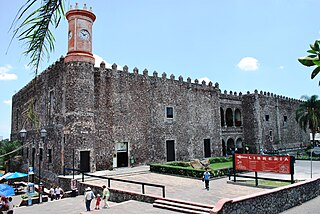 W
WThe Palace of Cortés in Cuernavaca, Mexico, built between 1523-1528, is the oldest conserved colonial-era civil structure in the continental Americas. The architecture is a blend between Gothic and Mudéjar, typical of the early 16th century colonial architecture. The building began as a fortified residence for conqueror Hernán Cortés and his aristocratic second wife, Doña Juana Zúñiga. It was built in 1526, over a Tlahuica Aztec tribute collection center, which was destroyed by the Spanish during the Conquest. Cortés replaced it with a personal residence to assert authority over the newly conquered peoples. As Cortés's residence, it reached its height in the 1530s, but the family eventually abandoned it due to on-going legal troubles. In the 18th century, colonial authorities had the structure renovated and used it as a barracks and jail. During the Mexican War of Independence, it held prisoners such as José María Morelos y Pavón. After the war, it became the seat of government for the state of Morelos until the late 20th century, when the state government moved out and the structure was renovated and converted into the current Museo Regional Cuauhnahuac, or regional museum, with exhibits on the history of Morelos.
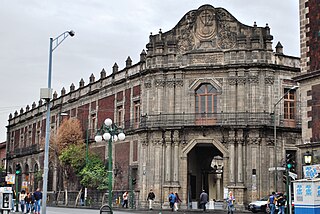 W
WThe Palace of the Inquisition stands on the corner of República de Brasil and República de Venezuela streets in Mexico City, Mexico. While neither side of the building faces the Santo Domingo Plaza, the entrance does, as it is placed at the corner, which is canted to allow it to face in that direction. Its long association with the Inquisition, which ended during the Mexican War of Independence, made it difficult to convert to other purposes. However, it eventually became the School of Medicine for the reconstructed National University. When UNAM moved to the Ciudad Universitaria in the 1950s, it retained ownership of this building, eventually converting the structure in what is today the Museum of Mexican Medicine.
 W
WThe Palacio de Gobierno, or the Government Palace of Nuevo León, is a state government building in Monterrey, the capital city of Nuevo León state, in northern Mexico.
 W
WThe Palacio del Obispado, Spanish for Bishop's Palace, is located in Monterrey, Nuevo León state, Northeastern Mexico. It contains a museum.
 W
WSan Ildefonso College currently is a museum and cultural center in Mexico City, considered to be the birthplace of the Mexican muralism movement. San Ildefonso began as a prestigious Jesuit boarding school, and after the Reform War it gained educational prestige again as National Preparatory School. This school and the building closed completely in 1978, then reopened as a museum and cultural center in 1992. The museum has permanent and temporary art and archeological exhibitions in addition to the many murals painted on its walls by José Clemente Orozco, Fernando Leal, Diego Rivera and others. The complex is located between San Ildefonso Street and Justo Sierra Street in the historic center of Mexico City.
 W
WSan Juan de Ulúa, also known as Castle of San Juan de Ulúa, is a large complex of fortresses, prisons and one former palace on an island of the same name in the Gulf of Mexico overlooking the seaport of Veracruz, Mexico. Juan de Grijalva's 1518 expedition named the island. On Easter Sunday 1519, Hernan Cortés met with Tendile and Pitalpitoque, emissaries from Moctezuma II's Aztec Empire.
 W
WThe San Pedro y San Pablo College colonial church and school complex built in late 16th and early 17th centuries, located in the historical center of Mexico City district of Mexico City, Mexico.
 W
WTeotihuacan (Spanish pronunciation: [teotiwa'kan] , is an ancient Mesoamerican city located in a sub-valley of the Valley of Mexico, which is located in the State of Mexico, 40 kilometres northeast of modern-day Mexico City. Teotihuacan is known today as the site of many of the most architecturally significant Mesoamerican pyramids built in the pre-Columbian Americas. At its zenith, perhaps in the first half of the first millennium, Teotihuacan was the largest city in the pre-Columbian Americas, with a population estimated at 125,000 or more, making it at least the sixth-largest city in the world during its epoch. After the collapse of Teotihuacan, central Mexico was dominated by the Toltecs of Tula until about 1150 CE.
 W
WThe Francisco Villa Museum is dedicated to the life and times of the Mexican Revolutionary, Francisco "Pancho" Villa. The museum is in Chihuahua, Chihuahua, Mexico, and is housed in the former estate of General Francisco Villa and his widow, María Luz Corral de Villa.
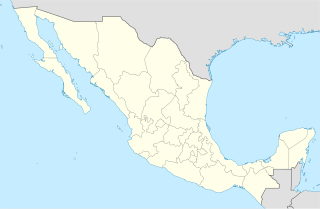 W
WThe William Spratling Museum is a museum in Taxco, Guerrero, Mexico. The museum contains 293 archeological pieces that were part of William Spratling's personal collection. There are bone and shell pieces, objects made with semi-precious stones, as well as jars and figurines, all from various parts of Mesoamerica. The most outstanding pieces are a skull covered in jade and a stele. There is a collection of counterfeit artifacts as well. Another area is devoted to the silverwork designs and the workshops that Spratling created in Taxco and Taxco el Viejo.